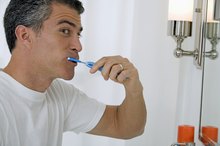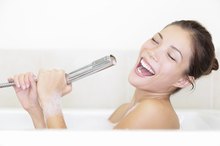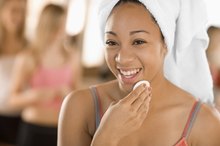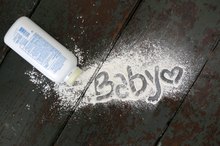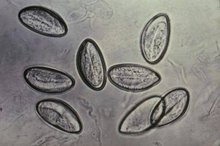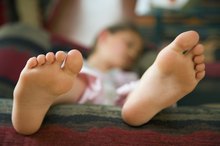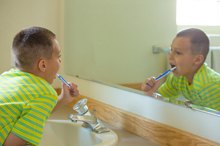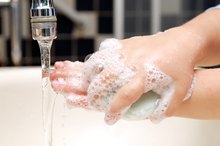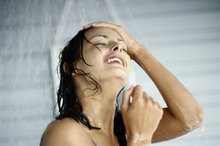What does fact checked mean?
At Healthfully, we strive to deliver objective content that is accurate and up-to-date. Our team periodically reviews articles in order to ensure content quality. The sources cited below consist of evidence from peer-reviewed journals, prominent medical organizations, academic associations, and government data.
- Centers for Disease Control and Prevention: Handwashing: Clean Hands Save Lives
- Centers for Disease Control and Prevention: Handwashing: Clean Hands Save Lives
The information contained on this site is for informational purposes only, and should not be used as a substitute for the advice of a professional health care provider. Please check with the appropriate physician regarding health questions and concerns. Although we strive to deliver accurate and up-to-date information, no guarantee to that effect is made.
A Hygiene Checklist for Children
Proper hygiene for children begins at the moment of birth when their tiny bodies are scooped up in a towel or wrap and the protective coating from the womb is gently cleaned away. As a child grows, he can begin to learn personal hygiene with a little assistance from his parents. Developing good hygiene skills in childhood can set the stage for cleanliness habits as an adult.
Bathing
Taking a daily bath or shower helps remove bacteria from the body. A child should pay special attention to her armpits, face, genitals and feet, advises Parents.com. Scrub under the fingernails and toenails to remove any debris. The outer ear and behind the ear should be gently cleansed as well. A child should learn to thoroughly dry his feet, especially between the toes where bacteria tends to collect, advises the Children’s Youth and Women’s Health Service or CYWHS 1.
- Taking a daily bath or shower helps remove bacteria from the body.
- A child should learn to thoroughly dry his feet, especially between the toes where bacteria tends to collect, advises the Children’s Youth and Women’s Health Service or CYWHS 1.
Shampooing
Types of Personal Hygiene
Learn More
Shampooing regularly and massaging the scalp will clear away dirt, oil and dead skin cells, notes the CYWHS. Children who spend a lot of time outside or tend to sweat might require more frequent shampoos. Older kids who are approaching puberty need to wash their hair often because the oil-producing sebaceous glands kick into high gear. Children with curly hair might benefit from conditioning their hair with coconut or sweet almond oil to help stop breakage, notes Parents.com.
- Shampooing regularly and massaging the scalp will clear away dirt, oil and dead skin cells, notes the CYWHS.
Hand Washing
Hand washing is extremely important for good hygiene since the hands are a dumping ground for the transmission of germs. The Centers for Disease Control and Prevention reports that numerous conditions and diseases are spread from unwashed hands 34. A child should wash his hands with soap and water several times a day. Hands should be thoroughly washed and rinsed for 20 seconds, advises the CDC. Key hand washing times include before eating, after going to the bathroom and after coughing or sneezing. Hands should be dried with a clean towel.
- Hand washing is extremely important for good hygiene since the hands are a dumping ground for the transmission of germs.
- Hands should be thoroughly washed and rinsed for 20 seconds, advises the CDC.
Deodorant
Personal Hygiene Objectives
Learn More
As a child approaches puberty, anywhere between the ages of 8 and 16, the sweat glands come alive, causing a marked increase in perspiration and body odor in most teens, according to Kids Health. A child can begin to routinely wear deodorant as part of his daily hygiene regime.
Clean Clothes
Dirt, sweat and dead skin cells can become trapped in socks, underwear and other clothing. That's why it's important to toss soiled clothes into the hamper and put on freshly laundered clothes every day, according to the CYWHS. Wearing cotton socks can help feet breath and keep them cool and dry. Sprinkling a little foot powder into shoes and socks can also help keep feet smelling fresh.
- Dirt, sweat and dead skin cells can become trapped in socks, underwear and other clothing.
- Sprinkling a little foot powder into shoes and socks can also help keep feet smelling fresh.
Teeth
Good hygiene practices for kids include brushing teeth twice a day, according to the American Academy of Family Physicians 2. Your child's dentist or hygienist can show your child the most effective brushing techniques for optimal oral hygiene. Replacing sweet snacks with vegetables and fruits or crackers and cheese can help prevent tooth decay.
Related Articles
References
Writer Bio
Karen Hellesvig-Gaskell is a broadcast journalist who began writing professionally in 1980. Her writing focuses on parenting and health, and has appeared in “Spirituality & Health Magazine" and “Essential Wellness.” Hellesvig-Gaskell has worked with autistic children at the Fraser School in Minneapolis and as a child care assistant for toddlers and preschoolers at the International School of Minnesota, Eden Prairie.

